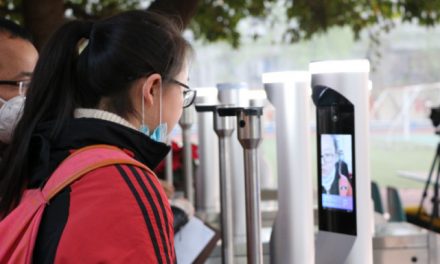Ten Benefits of Video Surveillance in Manufacturing Facilities

By Jorge Ramirez, Safe and Sound Security
If you visit a well-organized manufacturing facility there are certain things that you will notice right away. Proper signage, safety equipment, and if you continue to look around chances are you will quickly notice security cameras. Of course, there are other important safety elements that help ensure the success of the facility, but video surveillance plays an important role.
Regardless of industry, every well run manufacturing facility is striving to improve its efficiency while never compromising on safety. It is a balancing act that requires a combination of training, cooperation, and support. While training and cooperation are ongoing, a video surveillance system is a sure way to support the overall safety posture of a facility.
Every year manufacturing facilities experience unnecessary problems due to a lack of surveillance. When used correctly, video surveillance serves as an effective way to deter criminal activities and other incidents that can put employees and the company at risk. While some may think that video surveillance is there just for worst-case scenarios, there are many practical reasons to invest in an integrated video surveillance system. For those that are still undecided here are ten video surveillance benefits to consider:
- Security Awareness…
The main objective of video surveillance is to reinforce security. A facility with prominent security cameras sends a powerful deterrent message. An integrated video surveillance system:
- Provides assessment capabilities that contribute to the overall security awareness of a facility.
- Helps identify potential threats throughout a facility, including hazardous areas, as well as the perimeter.
- Attention to Safety…
At most manufacturing facilities there are many opportunities for accidents and injuries to take place. Surveillance cameras can be used in many creative ways to help reinforce safety. Some manufacturing facilities use surveillance cameras to:
- Monitor dangerous machinery.
- Monitor high-risk areas or high traffic areas that are prone to accidents.
- Crime Prevention…
Statistics vary but in most cases, video surveillance significantly reduces crime as well as other non-authorized activities in the workplace. Correctly positioned security cameras will help:
- Discourage theft and illegal activities.
- Assist law enforcement in the event of a criminal investigation
- Remote Monitoring…
With more and more manufacturing facilities using creative schedules in response to the pandemic, remote monitoring has become an important feature. An integrated surveillance system allows you to access your security footage over the internet so that you can view it from any secure location. In addition to remote monitoring enables you to:
- Manage multiple locations without needing to physically be onsite.
- Assist law enforcement in the event of a major security event such as an active shooter.
- Training…
They say a picture is worth a thousand words, well a video clip is worth 10 times that and you can even view it in slow motion. The truth is that video surveillance should not be used only to catch bad behavior. Video footage can assist with:
- Safety training, employee coaching, and remedial training.
- Management can also utilize video to learn important insights on what additional training may be needed for their employees to prevent issues.
- Compliance…
Video surveillance provides a practical way for manufacturing facilities to ensure that employees are following procedures and adhering to policies. It provides manufacturing facilities:
- Visual data of how operations are actually happening in the facility.
- Enables management to see if changes are being implemented or if they need to address any vulnerabilities.
- Documentation…
An integrated video surveillance system provides 24/7 coverage which means that anything that happens at the facility is captured on video. Having proper documentation allows you to:
- Use the footage for law enforcement or legal matters.
- Properly document onsite mishaps, safety violations, or unauthorized access.
- Addressing Internal Theft…
Internal theft is a real problem for manufacturing facilities. According to the Association of Certified Fraud Examiners (ACFE), the median internal fraud loss is $194,000. An integrated video surveillance system will:
- Serve as a deterrent for misguided employees.
- Serve as evidence in the event of an incident.
- Investigation…
In addition to providing valuable feedback regarding compliance and identifying hazards, the use of video surveillance can provide important information in accident investigations.
- Video footage can be analyzed to learn more about the incident and take corrective action.
- Video footage can also assist in identifying safety shortcomings, negligence, and repeated mishaps.
- Increased productivity…
Safety is great but at the end of the day manufacturing facilities want to remain productive. Video surveillance when setup correctly allows you to monitor your property and employees to detect slowdowns in real-time. Video surveillance cameras on the production line can improve efficiency by:
- Minimizing the impact of system upsets and production downtime.
- Improving operator performance.
Privacy & Support
There are two important points to address when considering the use of video surveillance in the workplace to monitor employee activities. It is important to recognize the employee’s privacy rights and your state’s privacy-related laws. Finally, it is best to consult with a licensed security installation company that can guide you through the process and provide professional support.
When used appropriately, video surveillance can be a powerful tool for manufacturing facilities that value safety.













